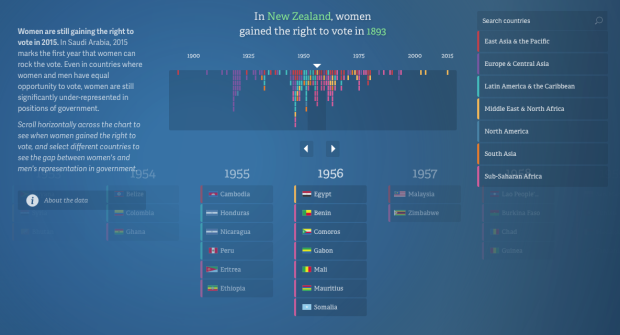Fathom Information Design recently made tools to find patterns in documents of text. They applied their tools to Bob Ross:
Using custom tools we’ve built to understand large document sets, we analyzed the transcripts of all 403 episodes of Bob Ross’ “The Joy of Painting” to see how his famous phrases evolved over 31 seasons. That analysis, which you can read in detail, revealed the clusters shown here, which are formed by patterns in the language Ross uses when talking about each episode’s painting.







